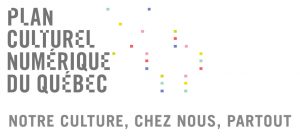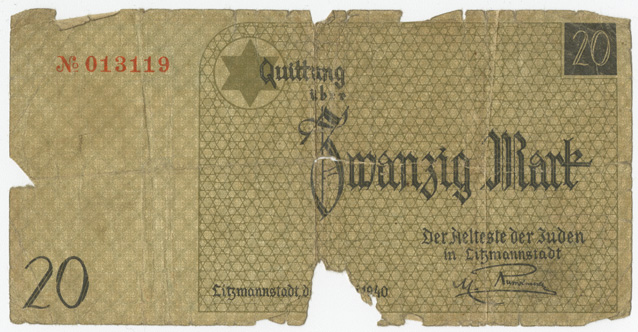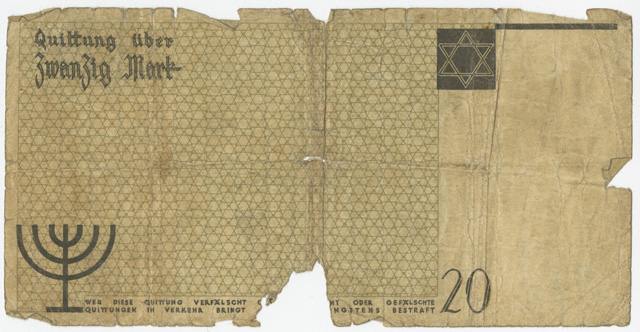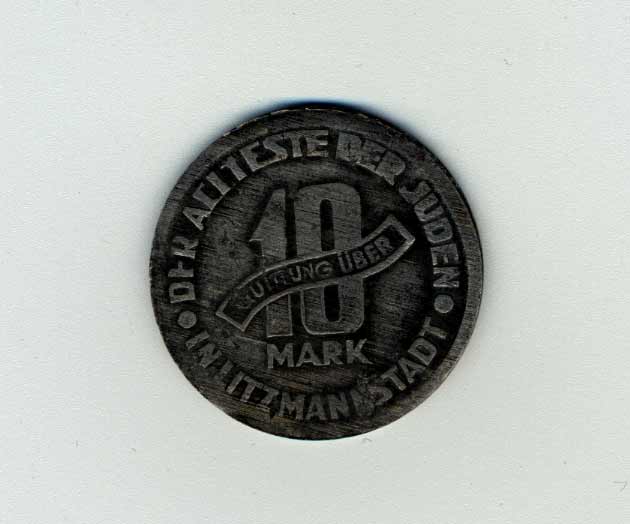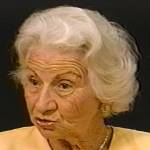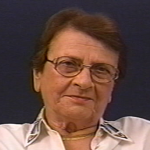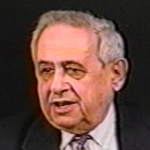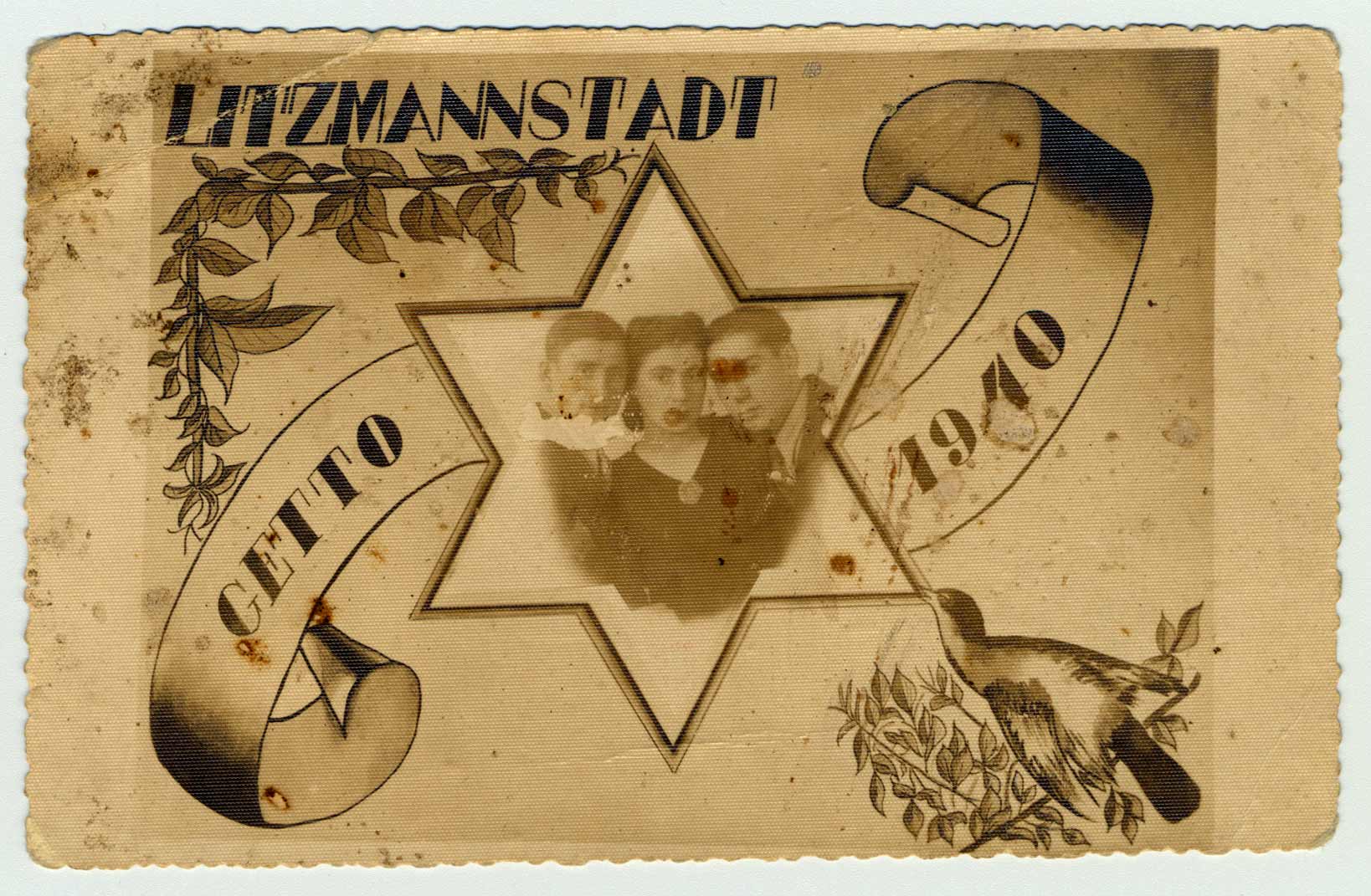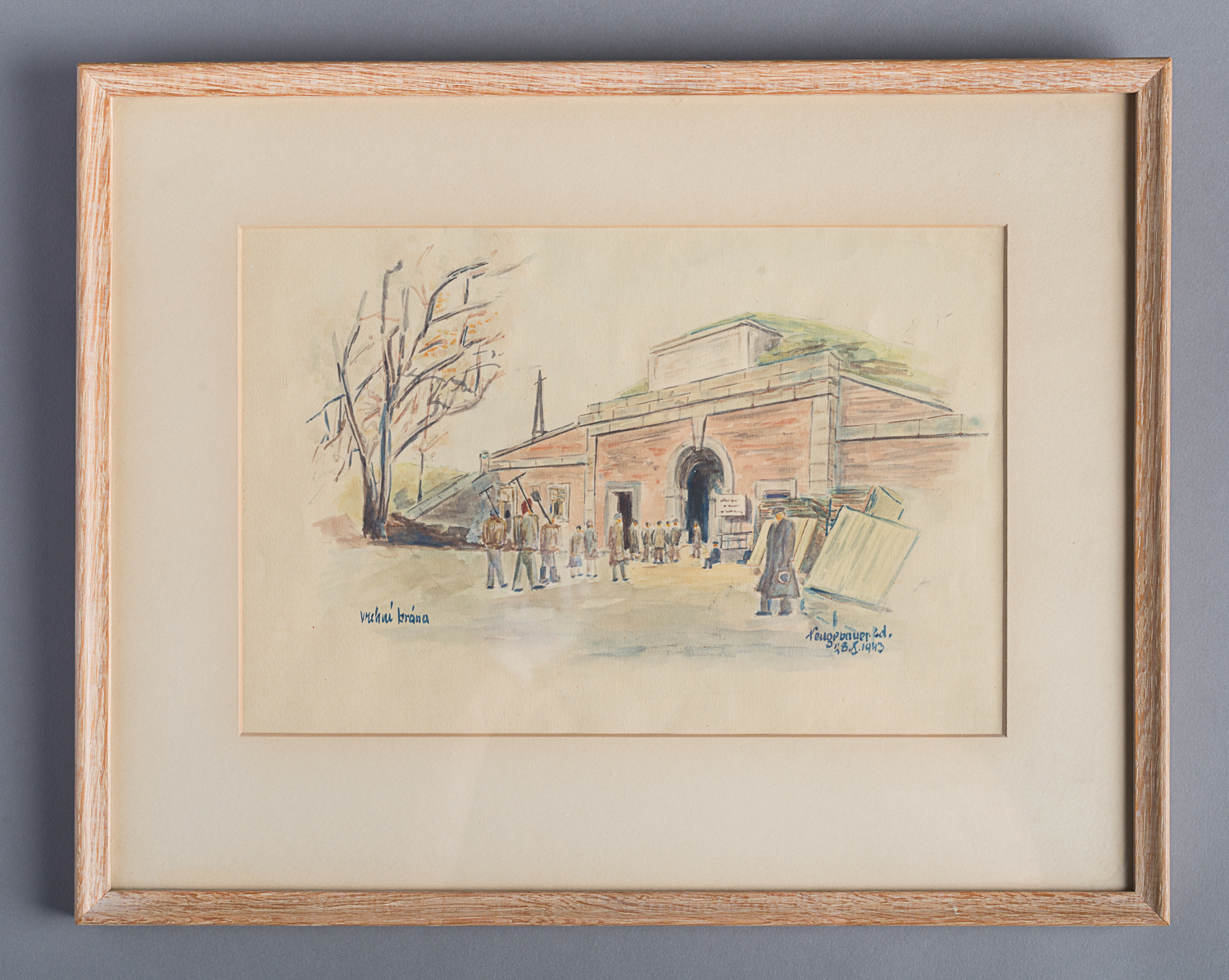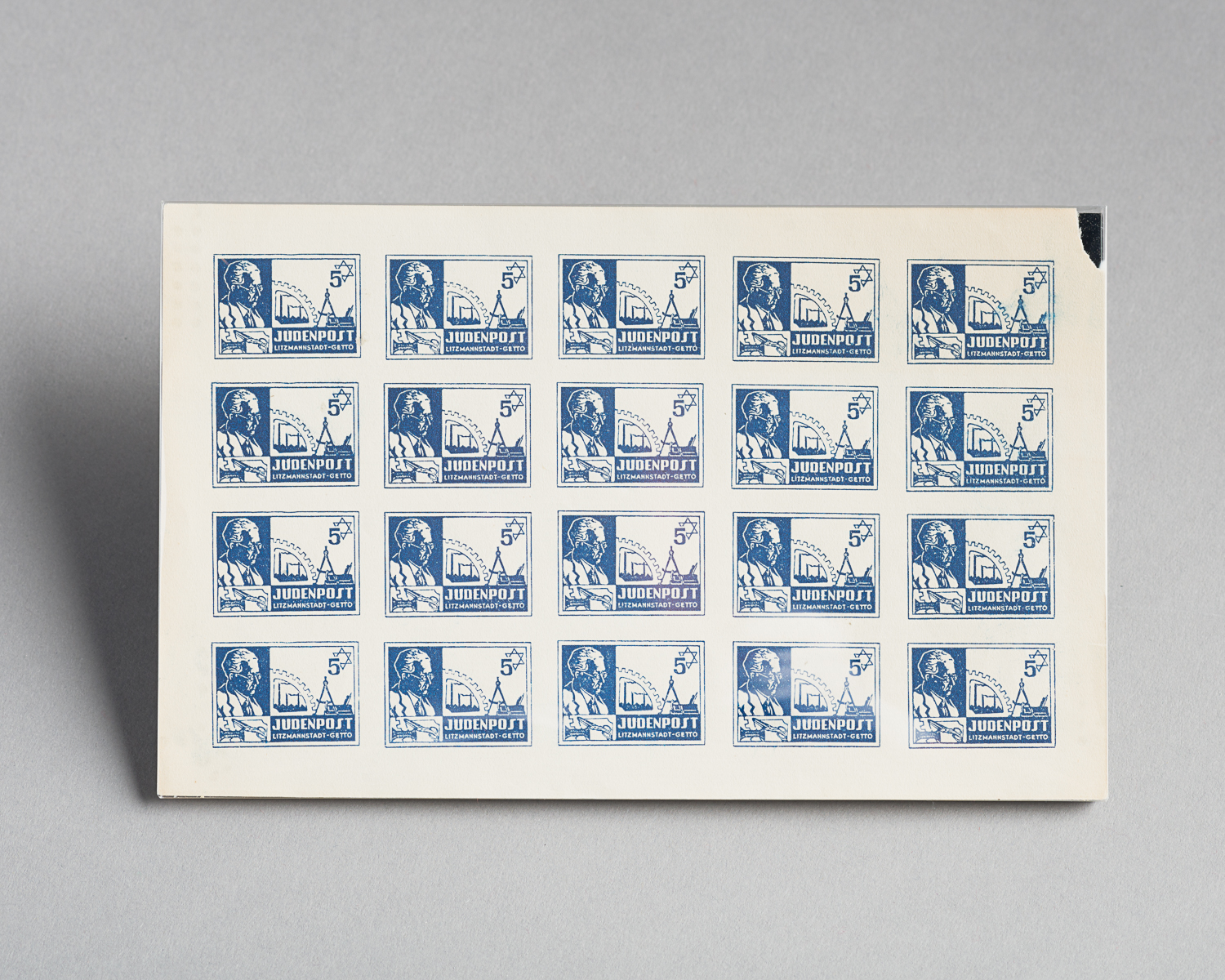This paper currency was used exclusively in the Litzmannstadt ghetto, the German name given to the Lodz city ghetto in Poland. This twenty-mark bill features symbols associated with Judaism so that it could be easily recognised by the Polish population. The Star of David is visible on the front side and on the back is a menorah, a lamp with seven candle stems.
Ghetto Currency: Preventing Exchanges with the Outside
Upon arrival in the ghettos, Jews were forced to exchange their money for this new currency. The Judenrat, the Jewish council in charge of the ghetto administration, was responsible for printing its own money. The objective was to further segregate the Jewish population by preventing them from trading goods with the outside world. This measure made survival extremely difficult during frequent food shortages in the ghettos. Many people died of hunger or from diseases in these conditions.
Paper Bill from the Lodz Ghetto
Max Fronenberg, received this paper bill from a woman who escaped the Lodz ghetto. He met her in a basement while hiding after he escaped the Warsaw ghetto by digging a tunnel with six men only days before the Polish uprising in August 1944. They lived in hiding until their liberation by the Soviet army on January 19, 1945.
Max Fronenberg donated this document to the Montreal Holocaust Museum in 1997.
This project is part of the implementation of the Plan culturel numérique du Québec